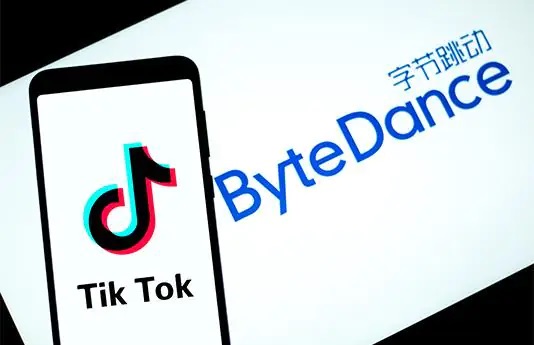WeChat, China’s wildly popular social messaging app, is experimenting with mobile commerce in a bid to become an all-in-one platform. What are the odds of success?
Twenty two-year-old Yin Junyu has been selling fashion accessories made of synthetic pearls and designer jewelry replicas for the last two years at a small store in Beijing’s Tongzhou district. A couple of months back, she felt the urge to try something new and decided to open an online shop on WeChat, China’s leading social messaging app.
Many small business owners in China like Yin are setting up shop-fronts online to capitalize on China’s e-commerce boom. Till recently this trend was restricted to traditional e-commerce players like Alibaba’s Taobao, but now social networking app WeChat has joined the fray.
For Yin it was easy from the get go. She was able to register and link an online store to her WeChat account in no more than five steps.
“You’ve got to back me when I launch my WeChat shop!” she excitedly told her friends. “I’ll give you a discount.”
WeChat, Tencent’s killer messaging app, has been making rapid moves towards mobile commerce and Yin’s online store is just one small manifestation of this. WeChat’s ambition is much bigger though—to become an “all-in-one” platform offering not just online shopping but various services. Now, mobile commerce is not exactly new in China. What is new is the integration of mobile commerce into what is otherwise a social networking platform.
WeChat embarked on this journey in June 2013, by first enabling mobile payments on its platform. Just a few months later in March 2014, it launched its e-commerce business, but at that point only big brands and retailers could sell on WeChat. Then in May, it opened the floodgates by allowing virtually anyone to set up a store within the app. It marketed it heavily: Beijing’s subway, for instance, was plastered with advertisements hollering, “One minute is all you need to open a WeChat shop!”
It is not hard to see why WeChat is doing this. China’s biggest messaging app is sitting on a huge base of nearly 438 million users (in contrast, WhatsApp has about 500 million users globally), potentially a multi-billion dollar opportunity. The next logical step would be to monetize this huge user base and morphing into an all-in-one platform is one way of doing that.
While Tencent refused to participate in this story, WeChat’s ambitions are fairly public. At a news conference in March this year, Tencent CEO Pony Ma had said, “We’ve enhanced our leading WeChat app from a communication tool to a multi-functional platform through initiatives such as smartphone games, official accounts and payment functions over the past year… All of our businesses are based on the WeChat platform, and we are confident that they will generate great returns in the long run.”
But will WeChat succeed?
The Virtual “Swiss Army Knife”
When WeChat started integrating shopping and other services into just one app, many in the media said that it was trying to become the virtual equivalent of a “Swiss army knife”. It started when WeChat launched a concept called Red Pocket Money (or Qiang Hongbao in Chinese) right before the Spring Festival this year. Giving out red paper envelopes filled with cash and goodwill is a Chinese tradition that dates back to over a thousand years. By linking their bank accounts to WeChat, users were able to send or receive Red Pocket Money virtually.
This stirred up some excitement. A Phoenix New Media publication reported that nearly 5 million (48,20,000) users tried out Red Pocket Money and virtual red pockets were opened at the pace of 25,000 per minute during peak time—when the clock struck 12. One thing led to another. Next, Tencent incorporated Didi Dache, a taxi-ordering app funded heavily by Tencent, into WeChat as well.
“The Red Pocket Money and taxi app trained users to pay using WeChat,” says Zhang Kaifu, Assistant Professor of Marketing at CKGSB. It was important for WeChat to cultivate the habit of buying things or services on a social platform before it extended it to new things. A new ‘My Wallet’ interface was introduced and that allows users to also top up their phones, select a variety of wealth management products, or buy air tickets.
Zhang Kaifu on what WeChat can learn from the lessons of Facebook commerce
WeChat is rendering many of these services with the help of partner service providers such as e-commerce retailer JD.com for shopping (apart from the small businesses) and Ctrip for air tickets, so WeChat itself does not deserve the title of ‘Swiss Army Knife’, says Will Tao, Analysis Director at iResearch, a market research company focused on China’s fast-changing internet sector. In a sense, WeChat’s role here is like that of a curator assembling all these services from different providers into one app. But the question still remains: will it succeed?
An Ace up its Sleeve?
Classic management theory suggests that companies should stick to their core competence. But here WeChat is doing the opposite: stepping away from its original business model into unfamiliar domains. To add to that consider the app ecosystem in China. There are apps for virtually everything from mundane things like finding a cab to more niche things like inspirational recipes or dating for the LGBT community. And there are also wildly popular e-commerce-only websites like JD.com or Alibaba’s Taobao and Tmall.
By morphing into an all-in-one platform, WeChat is essentially going head to head with well-established apps and e-commerce sites in areas of business it is not so familiar with. Has it set itself up to fail? Maybe. Maybe not. “We all want to keep things simple,” says Will Tao of iResearch. “If I can get all I want from WeChat, why bother to exit and then open another app?”
One way of doing that is by capitalizing on its unique strengths. As Zhang Kaifu suggests, compared to traditional PC-rendered services, WeChat has a huge advantage in location-based marketing. For instance, if you somehow get locked out of your apartment and don’t have the keys, you can use the “people nearby” function on WeChat to find a locksmith in close proximity. You do not carry your laptop everywhere you go but you do carry your phone. Under circumstances where a phone can serve your needs better and quicker, WeChat will have more chances at monetizing from its services.
But to further bolster WeChat as an all-in-one platform, having the “people nearby” function alone is not enough. WeChat has to continue to strategically build—and also ‘collect’—capabilities. For instance, Tencent picked up a 20% stake in Dianping.com, China’s Yelp, in February this year. This has been integrated into WeChat, and over time this can possibly help build user engagement.
Easy Come, Easy Go
But so far WeChat’s attempt at multi-functionality has yielded mixed results. Barely a month after she had launched it, Yin was forced to shutter her WeChat shop. “I only had one transaction done during this whole time and my friends have started blocking me already,” she says in exasperation.
Yin believed that WeChat would be an easy place to kick-start her own online business as WeChat’s advertisements had promised. But according to her, a crucial element was missing from the whole equation: the role of WeChat as an enabler. “The interface of WeChat shops is simple, and the functionality is rather basic,” says Yin. “The possible interactions with buyers are limited, unlike Taobao (Alibaba’s hugely successful B2C e-commerce site), which has its own instant messenger.”
There are other things too. For example, when customers search for a product on WeChat, all the matches will show up on one page but they are unable to further filter them, say, by price, color, brand, etc. Or when they buy something, there are no reviews or ratings available for them to make an informed decision. Building trust is tough, especially in the context of the internet. Failure in building a connection between sellers and buyers could be fatal in WeChat’s attempt at becoming an all-in-one platform.
Another handicap: WeChat permits you to only reach out to your own contacts, which is severely limiting in the first place. So Yin could only reach out—and sell to—her friends only. Given the limited pool of customers, she was forced to post links to her online store again and again. “And if you do that, people start blocking you. Ultimately, this jeopardizes your relationships,” says Yin, who has suffered due to this.
Also, WeChat has to deal with the problem of ‘migration’. Simply put, people might occasionally browse products on mobile devices, but when it comes to actual shopping, they are more likely to turn to an e-commerce site on a PC to make the actual transaction. The majority of internet transactions are still initiated on computers. While that may change in the future (because more than 80% of Chinese netizens are surfing the internet on their mobile devices and a great number are now getting their first online experience from smartphones), the reality remains that at this point of time the bulk of Chinese consumers are not shopping on their phones.
In addition, WeChat also has to overcome a massive barrier regarding perception: consumers see it as just a social messaging app.
At the heart of this problem is a simple issue: a social network is meant for socializing with friends, and an e-commerce site is meant for shopping. Combining the two may or may not work out. When people are in the social mode, they do not want to be bothered by pesky sales calls. As Zhang Kaifu points out, promoting products in a social environment could be seen as intrusive, “like selling products at a bar”.
The line between social and commercial might be blurry at the moment, but deep down somewhere, it is there. Nobody will notice boundaries until they have been crossed. For WeChat, striking a balance could be tough, but as a product based on “relationships and connections”, it has to think twice before blending all the services in. The danger for WeChat is that if it leans too heavily to the commercial side, it might backfire and hurt its original business model.
Facebook as a Textbook
WeChat can probably pick a lesson or two from Facebook’s somewhat unsuccessful stab at commerce. In 2010, Facebook tried luring retailers to open their official online shops on the Facebook platform. The idea was hailed as the next big thing.
But reality did not live up to the expectations. After just one year, big names such as Gap, J.C. Penney, and Nordstorm quietly shuttered their Facebook storefronts. There were a host of reasons behind this: one of course was that people didn’t want to shop while socializing. But they also didn’t like to shop through slow-loading web apps or share what they bought on their Facebook wall.
However, although by and large F-commerce, or what Facebook Commerce came to be known as, failed, there are some businesses running surprisingly well. Nearly 35,000 firms derive 17% of their total sales on Facebook and some even resulted in a 40% revenue growth 2011. So, what are these businesses and why are they successful?
According to Zhang Kaifu, niche shops, local offline businesses, and ticket sellers are the ones who are at better chances to succeed. The rationale behind this is that Facebook primarily is a social networking place. People post what is happening to their life and what they think is worth sharing with each other. In the sense of ‘relational marketing’, local offline businesses and tickets for events are deeply related to people’s lives, and niche products are often aligned with people’s interests. “It’s a matter of the fundamental perception of what is social and what is shopping,” says Zhang. Thus, when people feel involved and intrigued, they have greater motivation to share and ultimately, to buy.
While WeChat’s stores are still at a very rudimentary stage of development, it doesn’t mean that things will stay this way forever. In May this year, Tencent officially announced the establishment of the WeiXin Group, which kicked off Phase 2 of WeChat’s development. In this phase it will be modelled into a comprehensive platform including entertainment, social networking, commerce, and O2O (online to offline business), all in one app. Once that comes into play, who knows, WeChat might finally fulfill its mighty ambition.




















